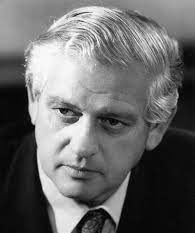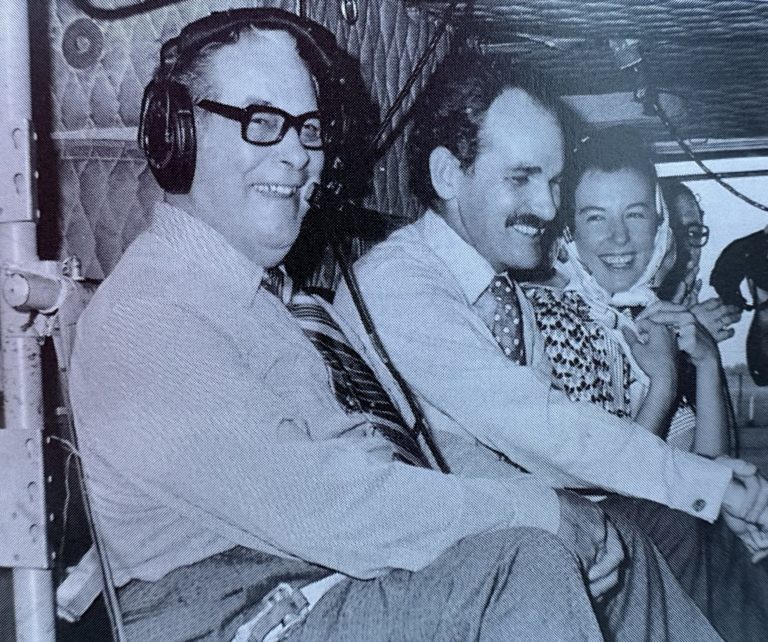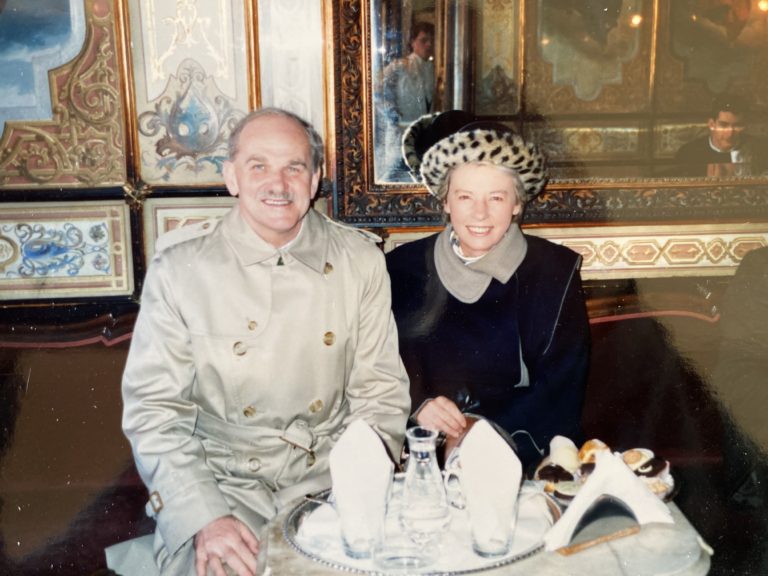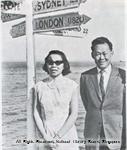New Zealand Decolonises
I had been only a few weeks in the Department of External Affairs when, in early January 1959, the newly-returned Deputy Secretary, Frank Corner, sent for me and said “Do you want to get your hands dirty?” New Zealand had, he said, invited a high-ranking United Nations Mission to go to the Trust Territory of Western Samoa in March but we had not yet started work on what proposals to put to them about the territory’s future. I returned to my room as Samoan Desk Officer, running my finger back and forth over a map of the Pacific until I was able to establish where Samoa was.
Samoa had been on a path of constitutional development for some years. In 1954 a Constitutional Convention had laid down a timetable for the remaining steps to give Samoa full internal self-government, with New Zealand responsible only for external affairs and defence, and the trusteeship would be ended. The example in everyone’s mind was neighbouring Tonga, a British protected state, and hence the goal was usually referred to as the ‘Tongan solution’.
The trouble was that since 1954 no-one had given this any further thought and we had no idea what to tell the Visiting Mission about the details of such a status. But with two months in hand and the outline of Samoan and New Zealand thinking well agreed, drafting a memorandum to present to the Mission did not seem too difficult even for a trainee.
For some weeks I read all the files and books on Samoa that I could find. Almost every day I went back and forth to Frank’s office and although he was busy (he was among other things Secretary-General of an impending SEATO Conference) we had lengthy discussions, very characteristic of his way of working, of the ‘what if’ kind. He would think out loud, what if we did this, why were we so sure of that, and stimulated by this I would go away and think again. In this way our views began to shift. By the end of February I had got as far as noting to Frank that “it might be best to stop agonising over past decisions and reappraise those about to be taken”.
There were growing doubts whether the Tongan solution would be durable as world-wide decolonisation gathered pace. Our office in New York was already warning that the Trusteeship Council or more likely the General Assembly would be suspicious of a protectorate and might be reluctant to end the trusteeship. The old Samoa hands grumbled that we were simply pandering to the newly-independent nations of the UN. Samoa, though, tucked away in the South Pacific was unlikely to attract fiery anti-colonialism. Though we would have had to work harder the Tongan solution would probably have been accepted.
Our doubts lay deeper. New Zealand ought to be looking for a permanent settlement, not one based on a snapshot in time which was already looking a little faded. As a self-governing Samoa became more confident there were bound to be disputes and frictions over the division of powers. What was needed was a relationship which would evolve with Samoa itself, not one which might have to be redone every decade or so.
All this was being talked back and forth as I began work on the memorandum for the Visiting Mission. My rather muddled first draft was patiently revised by Frank and by early March it was ready for interdepartmental discussion, together with Dick Powles the High Commissioner who had been asked to come from Apia, Paul Edmonds our trusteeship specialist from New York and Colin Aikman, New Zealand’s constitutional adviser on Samoan affairs. The paper dealt first with setting a date for Cabinet government and thereafter, more vaguely, with the final stages of what I had variously termed ‘full self-government’, ‘autonomy’ and even ‘independence’. In the course of the meeting, in Frank’s room on the top floor of Parliament Buildings, I recall pointing out that these terms were not in fact interchangeable. Frank, who had hurt his back gardening, leant back cautiously in his chair and said, why not independence?
This caused some animation, with both the Department of Island Territories and Powles irritated that five years of work based on the Tongan solution was being almost flippantly discarded. The meeting broke up on a sour note. The Tongan solution, however, was dead. Frank saw the Prime Minister and though there was slight doubt over whether Walter Nash fully grasped the distinction between self-government and independence he endorsed the new course.
A Cabinet paper was already in draft and there was just time for me to write a new back half for Cabinet’s approval on 16 March before the Visiting Mission arrived two days later. The paper emphasised that “we are giving Samoa a genuine and not illusory independence, and the continued association of the two countries will be by the Territory’s express desire”. The decision, though, rather backed out into the light of day. There had been no time to consult the Samoan leaders and so references to independence were guarded in our discussions with the Mission. At the end of May, McIntosh, after some needling by the Soviet representative, made it plain to the Trusteeship Council.
New Zealand’s decision to offer full independence to Samoa did not please our closest friends, though their uneasiness was on the whole confined to raised eyebrows and diplomatic representations. Australia, Britain and to a lesser extent the United States considered (it was the conventional view of the time) that the Territory was too small and too economically weak to stand alone. Worse than that, we were accused of imperilling the calm of the South Pacific and complicating the task of administrators of larger and most difficult territories like Fiji and Papua New Guinea. The British worried that we were setting an awkward precedent and began to consider how it might affect their plans for other ‘protected states’ like Kuwait and the Maldives.
These complaints had some force. It was true that New Zealand had an easier task in Samoa than its fellow administering authorities had elsewhere, but it was Samoa we were responsible for and we had to put its interests first. It was also true (though we never admitted it) that we saw Samoa as the beginning of decolonisation in the South Pacific. Frank and I had discussed this. New Zealand’s approaches had for a century been a colonial lake. This would change; this peaceful backwater would not be indefinitely insulated from the anti-colonial turmoil elsewhere. Better to work to ensure that the changeover in the Pacific was as fast and trouble-free as possible.
With Samoa’s independence fixed as the goal there remained the need to work out the form of its future relationship with New Zealand. This was to be embodied in a Treaty of Friendship but as we thought more about this its shape also began to evolve. In the days of the Tongan solution it was assumed that the treaty would give New Zealand control of external affairs. Our first thought was that New Zealand should instead accept responsibility for the conduct of them, but over the following year we came to believe that we should offer an agency, enabling independent Samoa to use New Zealand services and offices abroad to handle its own international affairs. This would allow Apia to develop overseas relationships at its own pace, and progressively take over more and more of the administration when it felt ready.
In June 1960, with constitutional drafting in its last stages, Frank came to Apia to discuss the Treaty (I had been posted there for a year). At a meeting with the Samoan leader Tamasese he made it clear that the independence being offered was no legal fiction and that the form of its future relationship with New Zealand would be of Samoa’s own choosing. Tamasese wept and said, “At last I trust New Zealand”. Some of his colleagues were more wary, worrying how firmly New Zealand would be locked in to stand by the new country. There were questions about immigration, secondments and continued aid but in the end it was agreed that goodwill rather than detailed drafting language was the best safeguard and that a short and simple Treaty was all that was required.
The last hurdle was one insisted on by the UN. It was uncomfortable about Samoa’s restricted matai suffrage. So were some in Wellington. Others thought it was the business of Samoans and not of outsiders. Either way the fact was that New Zealand’s power to make such a significant change was gone. The UN, however, was willing to accept the constitution of an independent Samoa only if approved by a plebiscite based on universal adult suffrage. This caused some heartburning among the chiefly Samoan leadership who agreed to it reluctantly as ‘the gateway to freedom’ through which the country had to pass before returning to the traditional Samoan way. Some of the more far-sighted understood that the gate, once opened, could not be nailed shut again.
Plebiscite Day on 9 May 1961 saw a heavy turnout in a festival atmosphere. Tamasese, voting at the Apia Courthouse in an aloha shirt, was embarrassed to find himself in a dignified queue of men and women in their Sunday best. When the poll was counted 80% of those registered, spread fairly evenly across the Territory, had voted in favour. The vote for the constitution was slightly larger than that for independence, for which the Samoan word tutoatasi of ‘standing alone’ had lingering connotations of loneliness, but the result was decisive and made the approval of the Trusteeship Council and the General Assembly a formality in New York.
By then I had been posted to the Permanent Mission in New York and found myself in the midst of heated denunciations of colonialism very different from the quiet in which we had worked out our ideas on Samoa. From having been something of a Western club the atmosphere and the character of the UN was undergoing a rapid change. By my first session the membership of the General Assembly had doubled. The new members were suspicious of the West, insecure and impatient of procedure. Their preoccupation was the struggle against colonialism and racial discrimination and their weapon was publicity. Carefully-crafted resolutions based on consultation and compromise were a thing of the past. Debates were viewed more as international protest rallies; their purpose was not so much to propose practical steps forward as to keep world opinion focussed on the problem.
New Zealand had taken a deep breath and alone of its administering friends had voted the previous year for the landmark Declaration on Colonialism, on the grounds that its intention if not its detail was right. As far as UN doctrine was concerned, the independence enjoined by the Declaration applied as much to small islands as to large colonies and it was clear that the Declaration’s priesthood, known as the Committee of Twenty-Four, would before long turn its attention to the Cook Islands. Some ingenious thinking was required if the interests of the islanders were to be reconciled with the wider aims of the UN’s majority. There was a glimmer of light. A companion resolution to the declaration had laid down that the aim of self-determination could be met in three ways, by independence, integration or by ‘free association’ with another country. No-one knew what free association meant, it was nowhere defined and had never been tried, but perhaps it might offer a way out of the Cooks’ increasingly unacceptable colonial status.
The Prime Minister, Keith Holyoake, agreed with the Department that New Zealand had as soon as possible to comply with the intention of the Declaration. As he told a somewhat restive Minister of Island Territories some time later, “I believe, and I have told the British and others, that a small country like New Zealand cannot afford to antagonise the bulk of world opinion”. The struggle between the Departments of External Affairs and Island Territories broke out again, more heatedly than ever. The islands administrators regarded the Cooks’ choice of internal self-government as ending the issue. The diplomats pointed out that a choice made by a colonial Legislature, chaired by the Resident Commissioner and with nominated members, would never be accepted in New York or anywhere else as an act of self-determination.
There were deeper considerations than fear of the UN. In February 1963 I wrote to Wellington arguing that only free association would work and that we should not from lack of nerve hedge it about with qualifications which would end in making the Cooks an indirect colony. What was being said about the Cooks reluctance to move was entirely believable. “But I do recall that the same was said of Western Samoa early in 1959. They were right then too.” As with Samoa if we based a settlement on their nervousness at this stage it might well be too restrictive in later years. The argument – it would be euphemistic to call it a discussion – went on for some months. It was carried on mainly by Bryce Harland with combative and not always tactfully-worded support from Frank Corner and me in New York.
The upshot was that a team of experienced constitutional advisers – Professors Aikman and Davidson and Jack Wright from Samoa – were despatched to Rarotonga in August to sit with the elected members of the Legislative assembly and work out what would be acceptable as the next steps. Their report, praised by the Prime Minister and even by the New York Mission, called for full self-government and some shared links with New Zealand. They thought these links ruled out free association but the cardinals of conscience in the Permanent Mission could at last see a clear path ahead. Since we were the pioneers of free association that status would be what we said it was. A common head of state or other links did not matter as long as there was a clear act of self-determination verified by the UN. Free association meant ‘continuous self-determination’, that the Cooks should retain sole control of their future, rather than concerns with specifics like citizenship or immigration.
By the end of 1963 we had a clear message for the General Assembly’s Fourth Committee. Africa was still the emotional centre but debate had become stale and repetitious. Speakers turned with almost noticeable relief to the future of the smaller territories. Our statement on the future of the Cooks, explicit about self-determination and UN verification, caught the ear of delegates. Rather improbably, we found ourselves being congratulated by Indonesia and hearing countries like Tunisia and Algeria speak approvingly of New Zealand’s readiness to devise new solutions to the problem of small territories.
As work continued on drafting a constitution for the Cooks we had in New York to head off awkward moments. Self-determination had not only to occur; it had to be seen to occur. The Committee of Twenty-Four was tempted to call for a ‘moment of independence’, but we headed this off by suggesting that the constitution would only come into force after a general election. The Committee’s next thought, a visiting mission to the Cooks, caused more stir. Having ruled out a plebiscite we were philosophical about this but it was anathema to our administering friends. If a mission was sent to the Cooks pressure would be brought to have it visit other South Pacific territories such as Fiji. New Zealand had gone too far. In London and in Canberra Ministers urged us to reconsider and in Washington Governor Harriman called in George Laking to argue against setting an undesirable precedent. Holyoake was unmoved, saying that we might have “to accept some things we and our friends would prefer not to” – such as a visiting mission, but in the end some deft diplomacy by Frank Corner headed off the danger.
From July 1964 I was back in Wellington working on the Cooks from the other end. As the UN difficulties receded political obstacles began to arise in New Zealand. Surprisingly the first was from the Governor-General. McIntosh called me in to say sternly, “You have infringed the Royal Prerogative”. Nothing so treasonable-sounding had been in my mind but it turned out that in specifying that the future New Zealand High Commissioner in Rarotonga should also double as the Queens’ Representative we had overlooked the courtesy of consulting Her Majesty first. Sir Bernard Fergusson, who privately disapproved of the draft constitution and the full self-government it would confer, went on writing regularly to Ministers about other defects he saw.
Next it was the turn of some Government backbenchers. Daniel Riddiford, chairman of the select committee which was able to consider the constitution, paid a visit to the Cooks in August. He returned with the conviction that the Government was on the wrong track, that federation was the answer and that communists in the Cooks and (more darkly) in Wellington were pushing for a self-government which was not wanted. His hearings over the next two months predictably brought petitioners who were uniformly opposed to the new constitution and four members of the Legislative Assembly had to come down to improve the balance. Then a press campaign began in Auckland ridiculing the notion of self-government and playing up the objections of those residents in New Zealand who feared that the land they had left behind might be taken from them. Holyoake met all this with his accustomed calm and with an unexpected firmness, telling his colleagues that the Government was taking a calculated risk. Even so the constitution bill passed its final reading only after an unprecedented three-hour debate.
Frank had persuaded the UN that the Secretary-General need only send a Representative to observe and report on the general election in the Cooks that would approve the new status. Omar Adeel, a Sudanese, found the ways of the South Pacific rather unfamiliar, especially on his first night when a group of girls burst into his room and removed all his bedclothes. He was brimming with honest anti-colonial suspicion of New Zealand’s intentions but a trip around some of the islands, in the course of which he was seasick one day and tipped on to the reef the next, brought more realism. On the way back to Rarotonga he said to me, “Independence makes no sense for these people”. And the General Election result, when it came on 20 April 1965, was an unequivocal endorsement of Albert Henry’s Cook Islands Party which was pledged to bring in the new constitution. Adeel’s report on this was wordy and nervous of his more radical colleagues in New York but it had no doubts that the election was fair and that the constitution reflected the wishes of the majority.
Old habits died hard though. The Committee of Twenty-Four, though there were many complimentary speeches, could not bring itself to make a recommendation, and neither could the Fourth Committee. In December 1965 the General Assembly, despite determined opposition from a few delegations like Ghana, endorsed free association for the Cooks by a large majority. In the teeth of the anti-colonial gale New Zealand had succeeded in establishing a new status for small territories. Ironically both Britain and the United States which had been so alarmed by this pioneering were later to use the precedent for island territories of their own in the Caribbean and Micronesia.
Talk given at the New Zealand Institute of International Affairs





